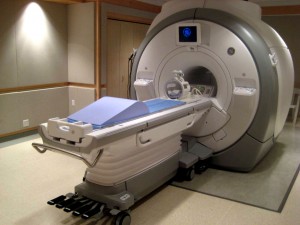There is currently an article making the rounds in the popular media (or at least the range of media that I’m exposed to) suggesting that testicular volume is a predictor of paternal investment in children: the larger the testicles, the less nurturing, fatherly behavior we see. I get the nagging sense that stories about genitals tends to get a larger-than-average share of attention (I did end up tracking the article down, after all), and that might have motivated both the crafting and sharing of this study (at least in the media. I can’t speak directly to the author’s intentions, though I can note the two domains often fail to overlap). In any case, more attention does not necessarily mean that people end up with an accurate picture of the research. Indeed, the percentage of people who will – or even can – read the source paper itself is vastly outnumbered by those who will not. So, for whatever it’s worth, here’s a more in-depth look at the flavor of the week research finding.
The paper (Mascaro, Hackett, & Rilling, 2013) begins with a discussion of life history theory. With respect to sexual behavior, life history theory posits that there is a tradeoff between mating effort and parental effort: the energy an organism spends investing in any single offspring is energy not spent in making new ones. Since then name of the game in evolution is maximizing fitness, this tradeoff needs to be resolved, and can be in various ways. Humans, compared to many other species, tend to fall rather heavily on the “investing” side of the scale, pouring immense amounts of time and energy into each highly-dependent offspring. Other species, like Salmon, for instance, invest all their energy into a single bout of mating, producing many offspring, but investing relatively less in each (as dead parents often make poor candidates for sources of potential investment). Life history theory is not just useful for understanding between-species differences though; it is also useful for understanding individual differences within species (as it must be, since the variation in the respective traits between species needed to have come from some initial population without said variance).
Perhaps the most well-known examples are the between-sex differences in life history tradeoffs among mammals, but let’s just stick to humans to make it relatable. When a woman gets pregnant, provided the baby will carried to term, her minimum required investment is approximately 9 months of pregnancy and often several years of breastfeeding, much of which precludes additional reproduction. The metabolic and temporal costs of this endeavor are hard to overstate. By contrast, a male’s minimum obligate investment in the process is a single ejaculate and however long intercourse took. One can immediately see that men tend to have more to gain from investing in mating effort, relative to women, at least from the minimum-investment standpoint. However, not all men have as much potential to achieve those mating-effort gains; some men are more attractive sexual partners, and others will be relatively shut-out of the mating market. If one cannot compete in the mating domain, it might pay to make oneself more appealing in the investment domain where they can more effectively compete. Accordingly, if one tends to attempt the investment strategy (though this need not mean a consciously-chosen plan), it’s plausible their body might follow a similar investment strategy, placing fewer resources into the more mating-orientated aspects of our physiology: specifically, the testicles.
Unsurprisingly, testicular volume appears to be correlated with a number of factors, but most notably sperm production (this especially the case between species, as I’ve written about before). Those men who tend to preferentially pursue a mating strategy (relative to an investment one) have slightly-different adaptive hurdles to overcome, most notably in the insemination and sperm competition arenas. Accordingly, Mascaro, Hackett, & Rilling (2013) predicted that we ought to see a relationship between testes size (representing a form of mating effort) and nurturing offspring (representing a form of parental effort). Enter the current study, where 70 biological fathers who were living with the mother of their children had their testicular volume (n = 55) and testosterone levels (n = 66) assessed. Additionally, reports of their parental behavior were also collected, along with a few other measures. As the title of the paper suggests, there was indeed a negative correlation (-0.29) between reported care-giving and testicle volume. This is the point where the highlighted finding begins to need qualifications, however, due to another pesky little factor: testosterone. Testosterone levels were also found to negatively correlate with reports of care-giving (-0.27), as well as the father’s reported desire to provide care (-0.26). Given that these are correlations, it’s not readily apparent that testicular volume per se would be the metaphorical horse pulling the cart.
Pulling the cart, metaphorically, “all the way“, that is.
Perhaps also unsurprisingly, testicular volume showed what the authors called a “moderate positive correlation” with testosterone levels (0.26, p = 0.06). As an aside, I find it interesting that the authors had, only a few sentences prior, reported an almost identically-sized correlation (r = -0.25, p = 0.06) between testicular volume and desire to invest in children, but there they labeled the correlation as a “strong trend”, rather than a “moderate correlation”. The choice of wording seems peculiar.
In any case, if bigger balls tended to go together with more testosterone, it becomes more difficult to make the case for testicular volume itself to be driving the relationship with parenting behaviors. In order to attempt and solve this problem, Mascaro, Hackett, & Rilling (2013) created a regression model, using testicular volume, testosterone levels, father’s earning, and hours worked as predictors of childcare. In that model, the only significant predictor of childcare was testosterone level.
Removing the “father’s earning” and “number of hours worked” variables from the regression model resulted in a gain in predictive value for testicular volume (though it was still not significant) but, again, it was testosterone that appeared to be having the greater effect. Whether or not it would be defensible to modify the regression model in that particular way in the first place is debatable, as the modification seems to be done in the interest of making testicular volume appear relatively more predictive than it was previously (also, removing those two previous factors resulted in the model accounting for quite a bit less of the variance in fathers’ overall childcare behaviors). Just because the authors had some a priori prediction about testicular volume and not about hours worked or money earned seems like only a mediocre reason for justifying the exclusion of the latter two variables while retaining the former.
There was also some neuroscience included in the study concerning the men looking at pictures of children’s faces and correlating the neural responses with childcare, testicular volume, and testosterone. I’ll preface what I’m about to say with the standard warning: I’m not the world’s foremost expert on neuroscience, so there is a distinct possibility I’m misunderstanding something here. That said, the authors did find a relationship there between testicular volume and neural response to children – a relationship that was apparently not diminished when controlling for testosterone. It should be noted that, again, unless I’m misunderstanding something, this connection didn’t appear to translate into significant increases in the childcare actually displayed by the males in the study once the effects of testosterone were considered (if it did, it should have shown up in the initial regression models). Then again, I have historically been overly-cautious about inferring much from brain scans, so take from that what you will.
To return to the title of this post, yes, testicular volume appears to have some predictive value in determining parental care, but this value tends to be reduced, often substantially so, once a few other variables are considered. Now I happen to think that the hypotheses derived from life history theory are well thought out in this paper. I imagine I might be inclined to have made such predictions myself. Testicular measures have already given us plenty of useful information about the mating habits of various species, and I would expect there is still value to be gained from considering them. That said, I would also advise some degree of caution in attempting to fit the data to these interesting hypotheses. Using selective phrasing to highlight some trends (the connection between testicular volume and desire to provide childcare) relative to others (the connection between testicular volume and testosterone) because they fit the hypothesis better makes me uneasy. Similarly, dropping variables from a regression model to improve the predictive power of the variable of interest is also troublesome. Perhaps the basic idea might prove more fruitful were it to be expanded to other kinds of men (single men, non-fathers, divorced, etc) but, in any case, I find the research idea quite an interesting step, and I look forward to hearing a lot more about our balls in the future.
References: Mascaro, J., Hackett, P., & Rilling, J. (2013). Testicular volume is inversely correlated with nurturing-related brain activity in human fathers. Proceedings of the National Academy of Sciences of the United States of America.





